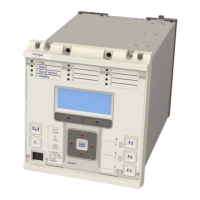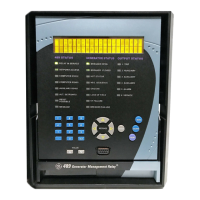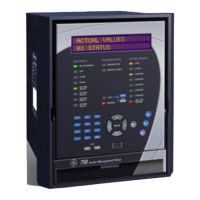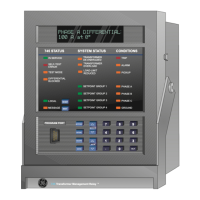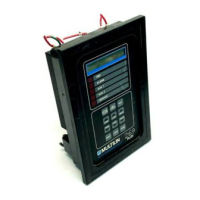This is the minimum Zone 4 Reach setting, so:
●
Set Z4 Ph. Reach and Z4 Gnd. Reach = 3.96 W
● Set Z4 Ph. Angle and Z4 Gnd. Angle = 80°
6.11.8 LOAD AVOIDANCE
The maximum full load current of the line can be determined from the calculation:
I
FLC
= [(Rated MVAFLC) / (
Ö
3 x Line kV)]
The settings must allow for a level of overloading, typically a maximum current of 120% I
FLC
prevailing on the
system transmission lines. Also, for a double circuit line, during the auto-reclose dead time of fault clearance on
the adjacent circuit, twice this level of current may flow on the healthy line for a short period of time. Therefore the
circuit current loading could be 2.4 x I
FLC
.
With such a heavy load flow, the system voltage may be depressed, typically with phase voltages down to 90% of
Vn nominal.
Allowing for a tolerance in the measuring circuit inputs (line CT error, VT error, protection accuracy, and safety
margin), this results in a load impedance which might be 3 times the expected rating.
To avoid the load, the blinder impedance needs to be set:
Z
£
(Rated phase-ground voltage Vn) / (I
FLC
x 3)
= (115/√3) / (I
FLC
x 3)
Set the V< Blinder voltage threshold at the recommended 70% of Vn = 66.4 x 0.7 = 45 V.
6.11.9
QUADRILATERAL RESISTIVE REACH SETTINGS
If applying Quadrilateral characteristics, as well as the Impedance Reaches, the Resistive Reaches also need to be
considered. The Resistive reaches of the phase-fault elements must be set to cover the maximum expected phase-
to-phase fault resistance. The Resistive reaches of the earth-fault elements should take into account the arc-
resistance and the tower footing resistance.
Phase-Fault Elements
Ideally, the Resistive reach should be set greater than the maximum fault arc resistance for a phase-phase fault
(Ra), calculated in terms of the minimum expected phase-phase fault current, the maximum phase conductor
separation, according to the formula developed by (van) Warrington as:
Ra = (28710 x L)/If x 1.4
where:
● If = Minimum expected phase-phase fault current (A)
● L = Maximum phase conductor separation (m)
Typical figures for Ra are given, for different values of minimum expected phase fault currents, in the following
table:
Conductor spacing
(m)
Typical system
voltage (kV)
Ra for
If = 1 kA
Ra for
If = 2 kA
Ra for
If = 3 kA
4 110 - 132
7.2 W (primary) 2.8 W (primary) 1.6 W (primary)
8 220 - 275
14.5 W (primary) 5.5 W (primary) 3.1 W (primary)
11 380 - 400
19.9 W (primary) 7.6 W (primary) 4.3 W (primary)
P446SV Chapter 7 - Distance Protection
P446SV-TM-EN-1 161
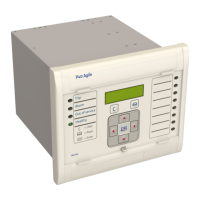
